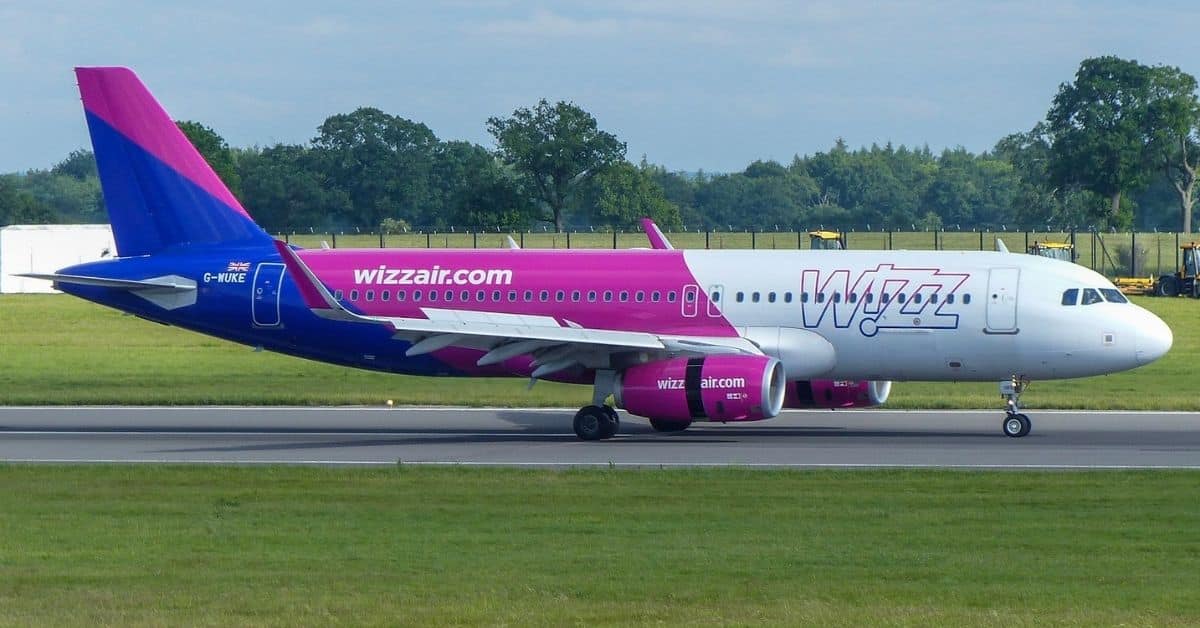With thousands in service worldwide, the Airbus A320 series is one of the most commercially successful narrowbody aircraft in aviation history.
Designed for short to medium-haul routes, the aircraft type can be found predominantly operating continental routes in Europe, North America, and Asia.
With a range of approximately 3,300 nautical miles, the Airbus A320 on paper is capable of completing transatlantic flights. However, this stated range does not factor in some variables.
While some single-aisle aircraft are capable of transatlantic operations, the Airbus A320 is typically not due to the limitations listed below.
Can an Airbus A320 cross the Atlantic?
Payload has a direct relationship with fuel consumption, therefore an Airbus A320 with a high payload (passengers and cargo) will experience increased fuel burn, leading to a decline in the range of the aircraft.
Aside from this, there are also other factors such as weather and ETOPs to be accounted for. When traveling from East to West, transatlantic routes are notorious for strong headwinds, which ultimately increase the flight time, which requires more fuel.
ETOPs, short for Extended-Range Twin Engine Operations is a rule which states any twin-engine aircraft flying over large stretches of water must be within a certain distance of a diversion airport in the event of a single-engine failure.
This rule typically states that an aircraft must be within 90 minutes of a diversion airport throughout the oceanic crossing. This 90-minute window can vary depending on the aircraft, which it can be 180 or 270 minutes.
An A320 may not comply with ETOPs regulations on many transatlantic routes, therefore not being legally feasible to operate.
Another aspect hindering the range capability of the Airbus A320 on transatlantic routes is the IFR reserves required to complete such flights. IFR reserves take into account potential diversions or aircraft holding times, in which the aircraft would burn extra fuel.
As a result, flight plans account for this reserve fuel by adding 60-90 minutes of additional fuel to the base requirement for the route.
When factoring this reserve fuel into consideration, the total fuel required will often exceed the fuel tank capacity of the Airbus A320 on transatlantic operations.
Aside from these operational limitations, there is also the passenger experience to take into consideration. Most Airbus A320s have a seating and cabin configuration which has been designed for short to medium-haul flights which typically do not exceed 4 hours of flight time.
With transatlantic flights being in the range of 5 hours plus, these aircraft may not be ideally equipped for ensuring passenger comfort on longer flights.
As mentioned above, there are some narrowbody aircraft that are capable of making transatlantic flights with passengers.

What Planes can Fly Over the Atlantic?
Within the A320 series of aircraft, the Airbus A318 and Airbus A319 have historically been operated on some transatlantic routes.
Up until 2020, British Airways operated a pair of Airbus A318s on the London City – Shannon – New York JFK route.
With a distance of 2,700 nautical miles, the Shannon – New York JFK leg of the route was a prime example of narrowbody transatlantic travel at the time.
Air Canada also operated some narrowbody transatlantic routes with the Airbus A319, the most well-known example being the London Heathrow to St John’s route, with a distance of just over 2,000 nautical miles.
Boeing’s 757-200 aircraft were also known for their transatlantic capabilities, with many operators of the type using the aircraft on US-Europe services. The most prominent examples are United and Delta Airlines.
In recent years, Airbus has begun delivery of the Airbus A321LR/XLR aircraft, which have a range of 4,000 and 4,700 nautical miles respectively.
With the global 757 fleet increasingly aging, the A321LR/XLR aircraft has become an attractive replacement for many operators due to its lower operating costs and reduced fuel consumption.
How Far can an A320 Fly?
With transatlantic flights being beyond the Airbus A320’s capabilities, it can be noted that the Airbus A320 can typically fly 2,000-2,500 nautical miles with a full payload. This equates to New York JFK to Los Angeles or London Heathrow to Tel Aviv.
With such flights being in the 4-5 hour flight time range, this is generally the limit for the A320’s capabilities in relation to the range.
Read More:
Is The B787 Dreamliner Safe? – A Complete Analysis
Can Planes Land in Zero Visibility? | Aircraft Autoland

After visiting more than 60 countries, I have probably been on every type of plane there is and visited countless airports. I did my very first international solo trip to South Africa at the age of only 16 and haven’t really stopped traveling since.
Despite the adventurous travel itch, I do have a nerdy side as well – which is satisfied by writing about all things aviation “too boring” for my regular travel blog.
